catalogue
2. Characteristics of the three basic volumes
Distributed replication volume
5. Maintenance commands for GFS file system
1, GFS overview
1. File system composition
File system interface (API)
Object managed software collection
Object and attribute
2. File system role
From a system point of view, a file system organizes and backs up the space of a file storage device
A system responsible for document storage, protection and retrieval of stored documents
Specifically, it is responsible for creating files, storing, reading, modifying, dumping files and controlling the storage of files for users
3. File system components
Brick (block storage server) the server that actually stores user data (pe of lvm)
Volume "partition" of the local file system (lvm's volume)
FUSE user space file system (category EXT4), "this is a pseudo file system", client exchange module
VFS (virtual port) is a kernel virtual file system. The user submits a request to VFS, then VFS gives it to fuse, then GFS client, and finally the client gives it to the remote storage
Glusterd (service) is a process that runs the re storage node (the client runs Gluster client). During the use of GFS, the exchange between the whole GFS is completed by Gluster client and glusterd
4. GFS features
Scalability and high performance
High availability
Global unified namespace
Elastic volume management
Standard based protocol
5. Working principle
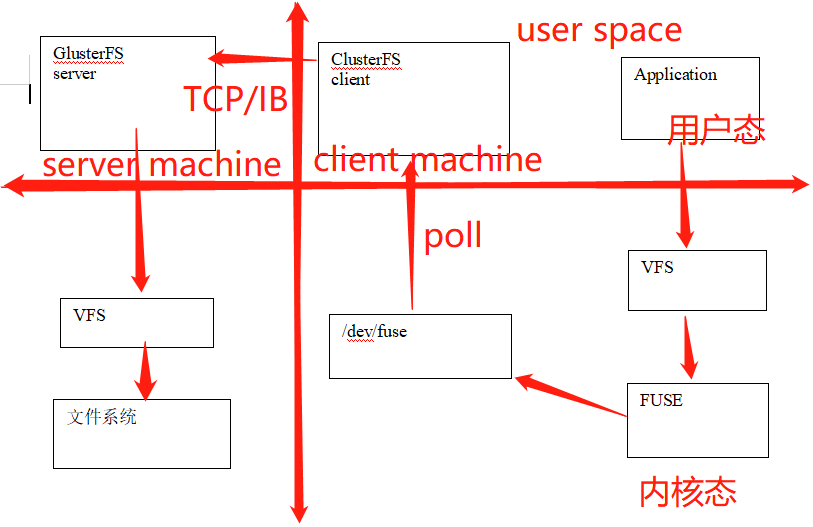
First, external requests are sent to FUSE through the mount point and the VFS interface in the linux system
Then FUSE gives the data to the memory / dev/fuse, and then gives it to the GFS client for processing
The GFS client processes the data and transmits it to the GFS server through TCP and other protocols
After receiving the data, the GFS server will process the data through the VFS interface and transfer it to the file system
2, GFS volume
1. GFS volume type
Distributed volume
Strip roll
Copy volume
Distributed striped volume
Distributed replication volume
Striped copy volume
Distributed striped data volume
2. Characteristics of the three basic volumes
Distributed volume
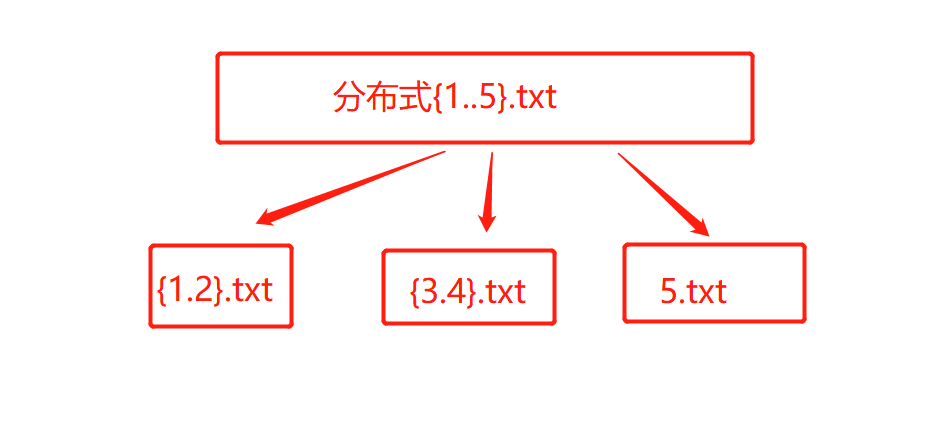
The files are distributed on different servers without redundancy
Expand volume size more easily and cheaply
A single point of failure can cause data loss
Rely on underlying data protection
Strip roll
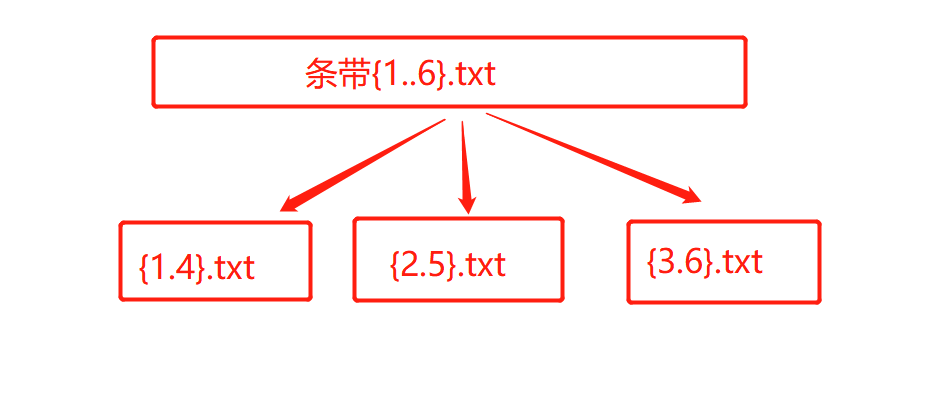 The data is divided into smaller pieces and distributed to different strips in the block server cluster
The data is divided into smaller pieces and distributed to different strips in the block server cluster
Distribution reduces load and speeds up access with smaller files
No data redundancy
Copy volume
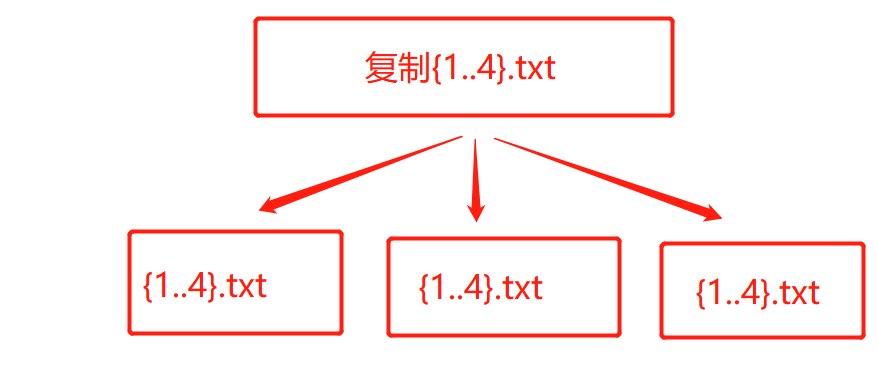
All servers in the volume keep a complete copy
The number of copies of a volume can be determined by the customer when it is created
By at least two block servers or more
Redundancy
Distributed striped volume
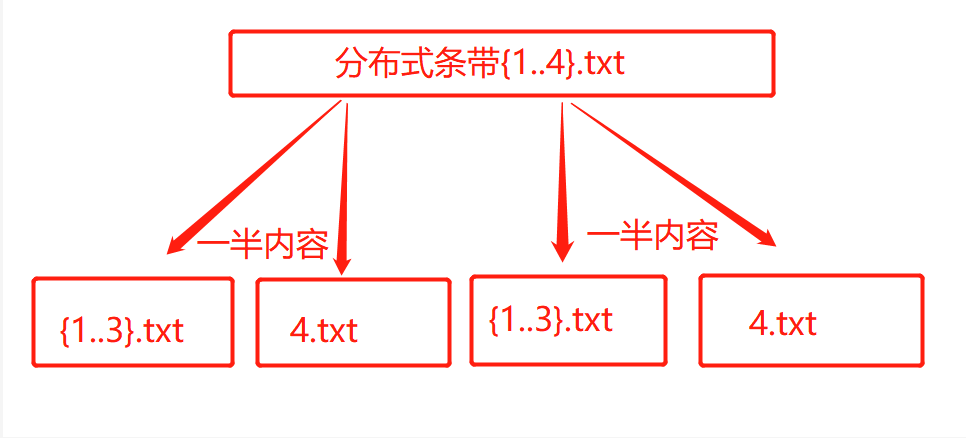
Distributed replication volume
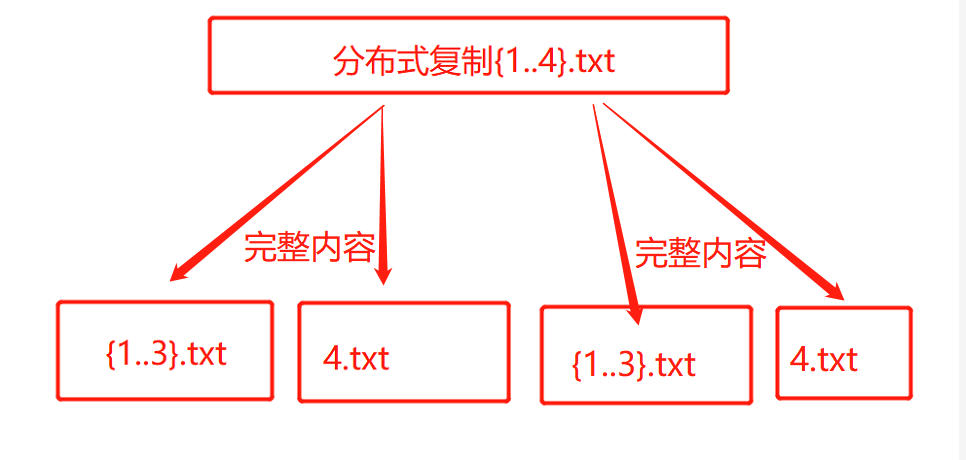
3. Four server configurations
#Turn off firewall
systemctl stop firewalld
setenforce 0
#Partition the disk and mount it
vim /opt/fdisk.sh
#!/bin/bash
NEWDEV=`ls /dev/sd* | grep -o 'sd[b-z]' | uniq`
for VAR in $NEWDEV
do
echo -e "n\np\n\n\n\nw\n" | fdisk /dev/$VAR &> /dev/null
mkfs.xfs /dev/${VAR}"1" &> /dev/null
mkdir -p /data/${VAR}"1" &> /dev/null
echo "/dev/${VAR}"1" /data/${VAR}"1" xfs defaults 0 0" >> /etc/fstab
done
mount -a &> /dev/null
cd /opt
chmod +x fdisk.sh
./fdisk.sh
#Configure the / etc/hosts file of each node (all node operations)
echo "192.168.255.142 node1" >> /etc/hosts
echo "192.168.255.150 node2" >> /etc/hosts
echo "192.168.255.180 node3" >> /etc/hosts
echo "192.168.255.200 node4" >> /etc/hosts
#Install and start GFS (all node operations)
unzip gfsrepo.zip
cd /etc/yum.repos.d/
mkdir repos.bak
mv * repos.bak/
vim glfs.repo
[glfs]
name=glfs
baseurl=file:///opt/gfsrepo
gpgcheck=0
enabled=1
yum clean all && yum makecache
yum -y install glusterfs glusterfs-server glusterfs-fuse glusterfs-rdma
systemctl start glusterd.service
systemctl enable glusterd.service
systemctl status glusterd.service
#Add DNS for time synchronization
echo "nameserver 114.114.114.114" >> /etc/resolv.conf
ntpdate ntp1.aliyun.com
#Add nodes to the storage trust pool (operate in any node)
gluster peer probe node1
gluster peer probe node2
gluster peer probe node3
gluster peer probe node4
#View the cluster status on each node node
gluster peer status
========Create volumes according to the following plan=========
Volume name Volume type Brick
dis-volume Distributed volume node1(/data/sdb1),node2(/data/sdb1)
stripe-volume Strip roll node1(/data/sdc1),node2(/data/sdc1)
rep-volume Copy volume node3(/data/sdb1),node4(/data/sdb1)
dis-stripe Distributed striped volume node1(/data/sdd1),node2(/data/sdd1),node3(/data/sdd1),node4(/data/sdd1)
dis-rep Distributed replication volume node1(/data/sde1),node2(/data/sde1),node3(/data/sde1),node4(/data/sde1)
#Create a distributed volume without specifying the type. The default is to create a distributed volume
gluster volume create dis-volume node1:/data/sdb1 node2:/data/sdb1 force
gluster volume list
gluster volume start dis-volume
gluster volume info dis-volume
#The specified type is stripe, the value is 2, and followed by 2 brick servers, so a striped volume is created
gluster volume create stripe-volume stripe 2 node1:/data/sdc1 node2:/data/sdc1 force
gluster volume start stripe-volume
gluster volume info stripe-volume
#The specified type is replica, the value is 2, and followed by 2 brick servers, so a replication volume is created
gluster volume create rep-volume replica 2 node3:/data/sdb1 node4:/data/sdb1 force
gluster volume start rep-volume
gluster volume info rep-volume
#Create distributed striped volumes
gluster volume create dis-stripe stripe 2 node1:/data/sdd1 node2:/data/sdd1 node3:/data/sdd1 node4:/data/sdd1 force
gluster volume start dis-stripe
gluster volume info dis-stripe
#Create distributed replication volumes
gluster volume create dis-rep replica 2 node1:/data/sde1 node2:/data/sde1 node3:/data/sde1 node4:/data/sde1 force
gluster volume start dis-rep
gluster volume info dis-rep
4. Client configuration
cd /opt
unzip gfsrepo.zip
cd /etc/yum.repos.d/
mkdir repos.bak
mv * repos.bak
vim glfs.repo
[glfs]
name=glfs
baseurl=file:///opt/gfsrepo
gpgcheck=0
enabled=1
yum clean all && yum makecache
yum -y install glusterfs glusterfs-fuse
mkdir -p /test/{dis,stripe,rep,dis_stripe,dis_rep}
echo "192.168.255.142 node1" >> /etc/hosts
echo "192.168.255.150 node2" >> /etc/hosts
echo "192.168.255.180 node3" >> /etc/hosts
echo "192.168.255.200 node4" >> /etc/hosts
mount.glusterfs node1:dis-volume /test/dis
mount.glusterfs node1:stripe-volume /test/stripe
mount.glusterfs node1:rep-volume /test/rep
mount.glusterfs node1:dis-stripe /test/dis_stripe
mount.glusterfs node1:dis-rep /test/dis_rep
df -h
5. Maintenance commands for GFS file system
1,see GlusterFS volume [root@node1 ~]# gluster volume list 2,View information for all volumes [root@node1 ~]# gluster volume info 3.View all volume status [root@node1 ~]# gluster volume status 4. ####Stop a volume [root@node1 ~]# gluster volume stop dis-stripe 5. Delete a volume [root@node1 ~]# gluster volume delete dis-stripe 6.Black and white list [root@node1 ~]# gluster volume set dis-rep auth.allow 192.168.255.* ##Set all IP addresses of the 192.168.255.0 network segment to access the dis rep volume (distributed replication volume) volume set: success
summary
Workflow of GFS: after the customer sends the request, the information is handed over to the virtual space of FUSE through VFS, and then transferred to / dev/fuse in memory. Then, at the client of GFS, the request is sent to the server of GFS through TCP, IB and other protocols. In a more GFS volume form, the request is handed over to the file system through VFS. Similarly, after obtaining the data, it is placed in memory, and the user The request for is obtained directly in memory
Type of file system volume
| type | Redundancy | Document integrity | Number of disks | Disk utilization | characteristic |
| Distributed volume | N | N | Read save fast | ||
| Strip roll | N | N | Read save fast | ||
| Copy volume | yes | yes | N>=2 | N/2 | security |
| Distributed striped volume | N>=2 | N | Read save fast | ||
| Distributed replication volume | yes | yes | N>=4 | N/2 | Relatively safe and fast |